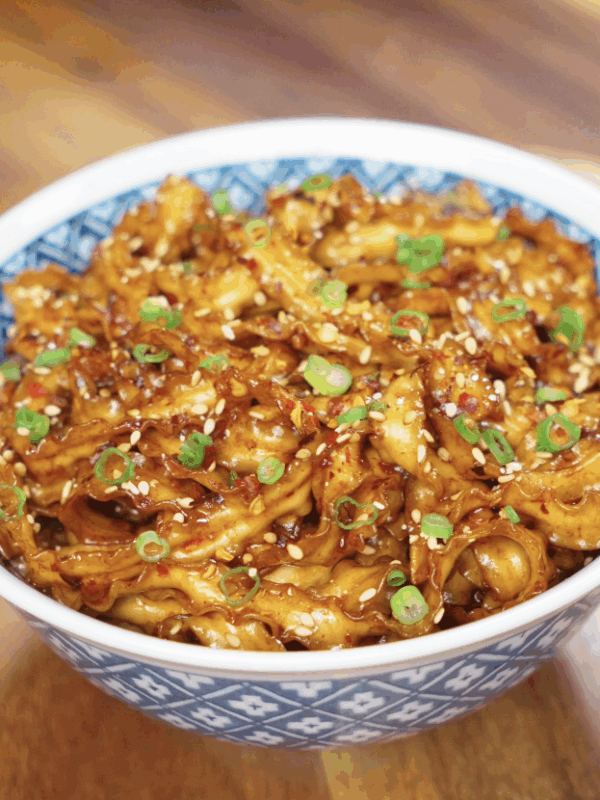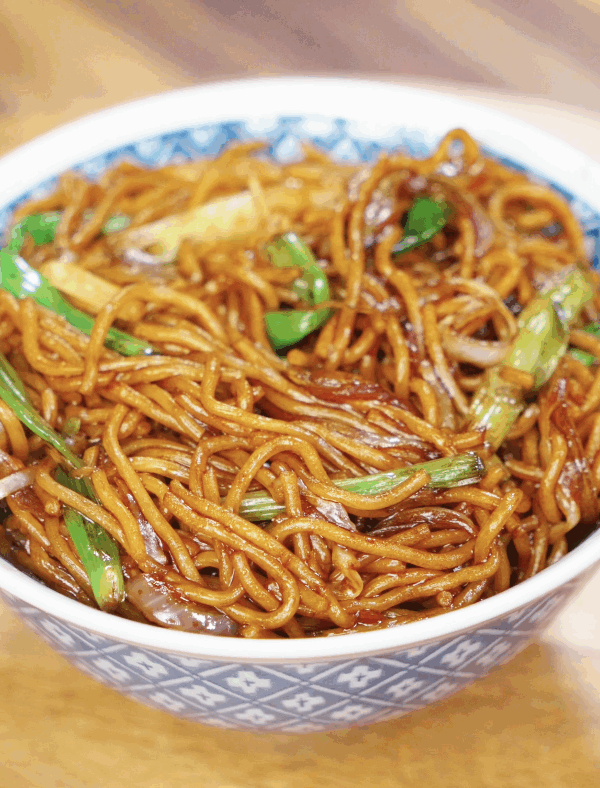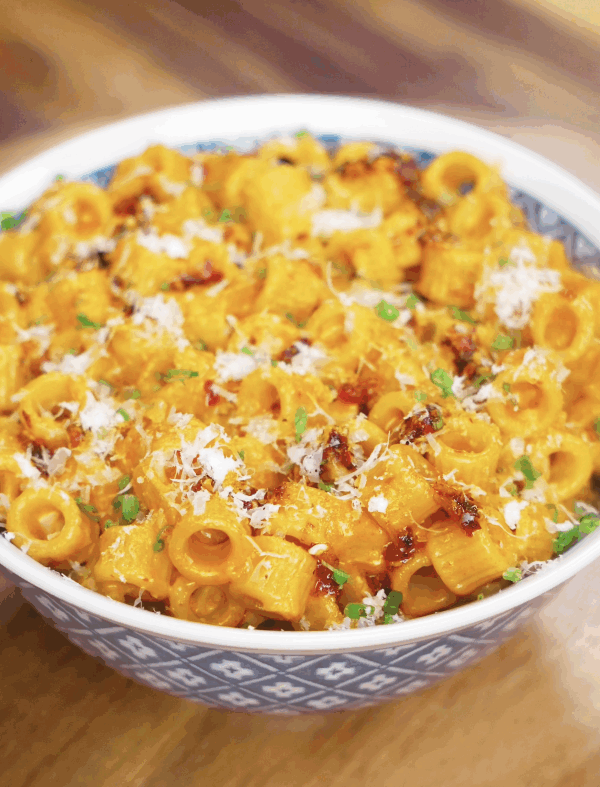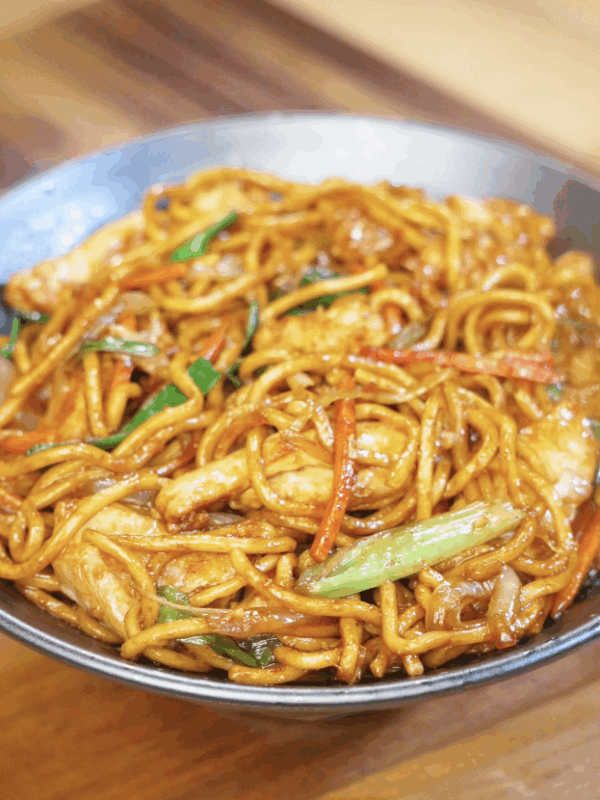Spicy Peanut Noodles
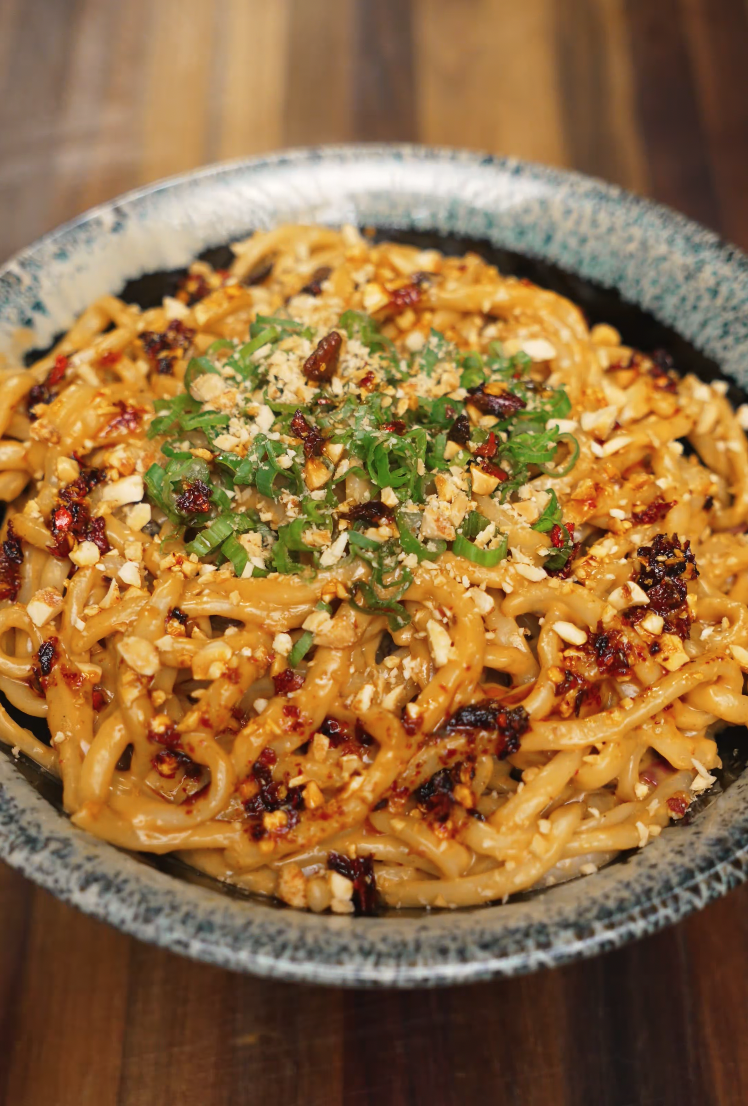
Equipment
Ingredients
Noodles and Sauce
- 1 bundle fresh wheat noodles, see note 1
- 2 tablespoons peanut butter, see note 2
- 1.5 tablespoons soy sauce
- 1 tablespoon black vinegar, or any vinegar
- 2 cloves garlic, minced
- ½ inch piece ginger, minced
- 2 tablespoons chili oil
- 1.5 tablepsoons sugar
- ¼ teaspoon Sichuan chili powder, or chili flakes
- 3 tablespoons reserved noodle water
Optional Garnishes
- Crushed peanuts
- Scallions
- Extra chili oil
- Sesame seeds
Instructions
- Boil the noodles one minute before al dente per package instructions and reserve 3 tablespoons of noodle water before draining.
- In a bowl, mix peanut butter, soy sauce, vinegar, garlic, ginger, chili oil, sugar, Sichuan chili powder, and reserved noodle water until smooth.
- Add the cooked noodles to the sauce and toss until evenly coated.
- Serve in a bowl and optionally garnish with crushed peanuts, scallions, and extra chili oil.
Notes
Nutrition
Nutrition information is automatically calculated, so should only be used as an approximation.
Why My Spicy Peanut Noodles Are Always So Reliable
These Spicy Peanut Noodles are the kind of dish I make when I want something bold, rich, and fast. The sauce is creamy and full of umami, the noodles are chewy and satisfying, and the whole thing comes together in under 10 minutes. It’s perfect for weeknights or whenever I need something comforting and flavorful without much effort.
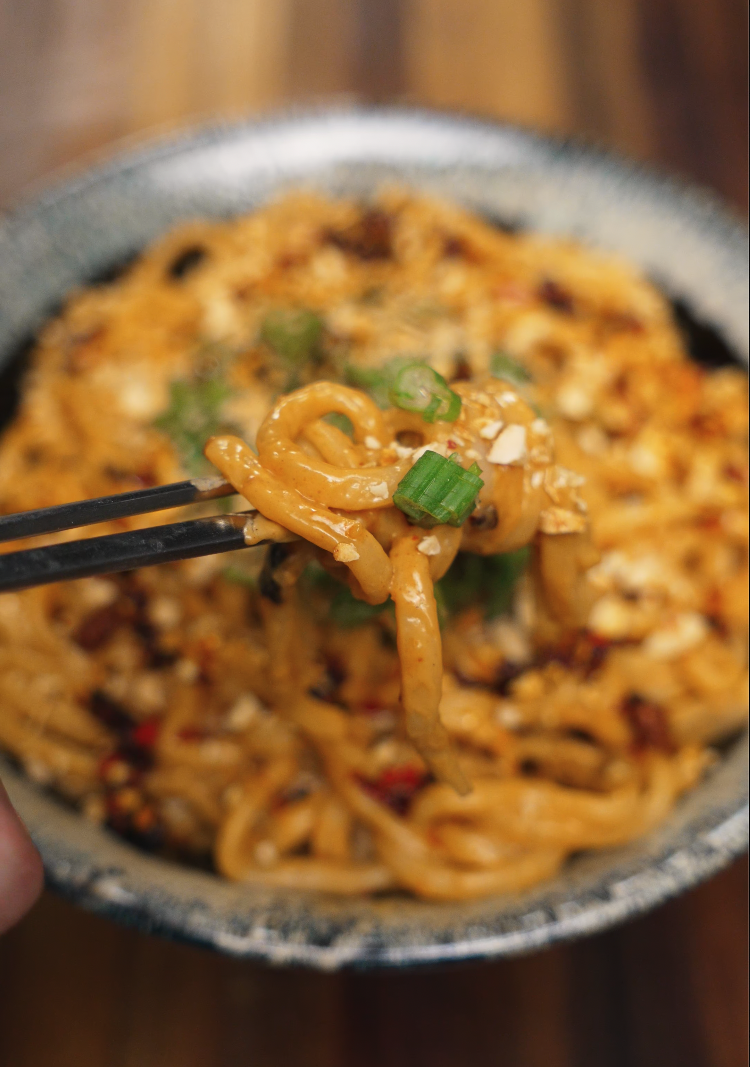
Ingredients for Spicy Peanut Noodles
This sauce is all about balance. Peanut butter gives it body and richness, while soy sauce and vinegar cut through with savory and tangy notes. A spoonful of chili oil adds heat and depth, and a touch of sugar ties it all together. Garlic and ginger round it out with fresh aromatics, and noodle water loosens everything into a glossy, clingy sauce.
Noodles and Sauce
- 1 bundle fresh wheat noodles
- 2 tablespoons peanut butter
- 1.5 tablespoons soy sauce
- 1 tablespoon black vinegar
- 2 cloves garlic, minced
- ½ inch ginger, minced
- 2 tablespoons chili oil
- 1.5 tablespoons sugar
- ¼ teaspoon Sichuan chili powder
- 3 tablespoons reserved noodle water
Optional Garnish
- Crushed peanuts
- Scallions
- Sesame seeds
- Extra chili oil
How to Make Spicy Peanut Noodles
Step-by-Step Instructions
Boil your noodles just until they’re tender, then scoop out a bit of the cooking water before draining. That starchy water is key for helping the sauce cling to the noodles
In a large bowl, mix together the peanut butter, soy sauce, black vinegar, garlic, ginger, chili oil, sugar, chili powder, and reserved noodle water. Stir until the sauce is smooth and creamy
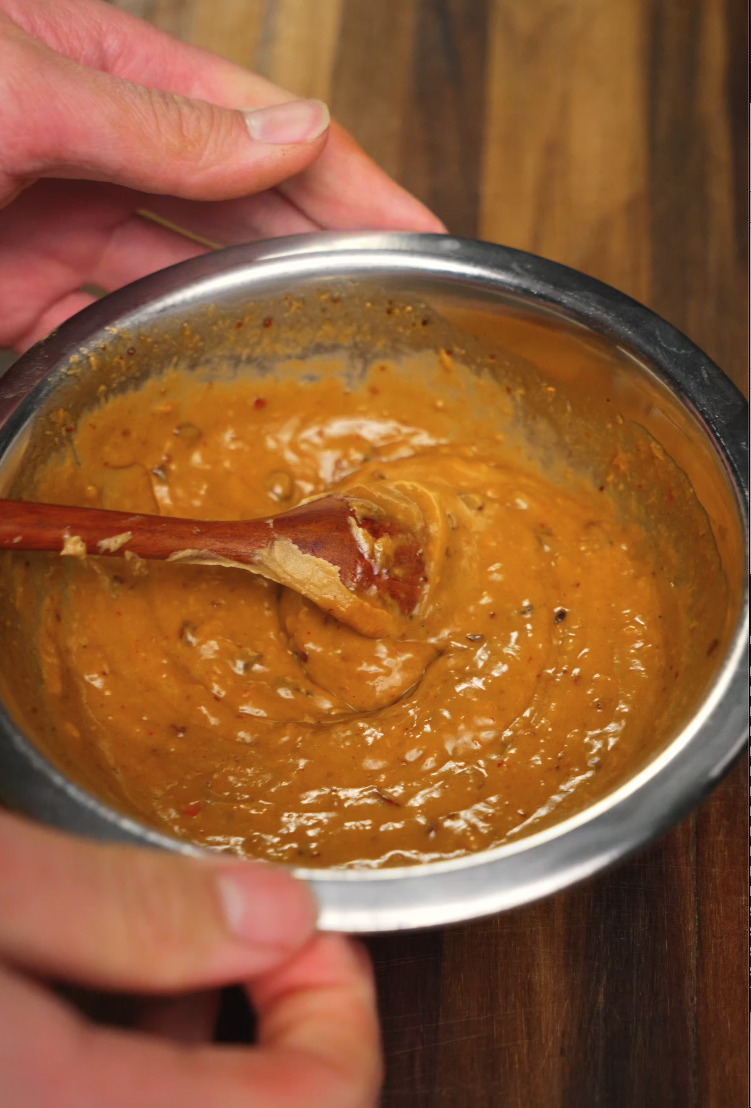
Toss the noodles into the sauce and mix until everything is evenly coated. Pile into a bowl and top with scallions, peanuts, or whatever you like
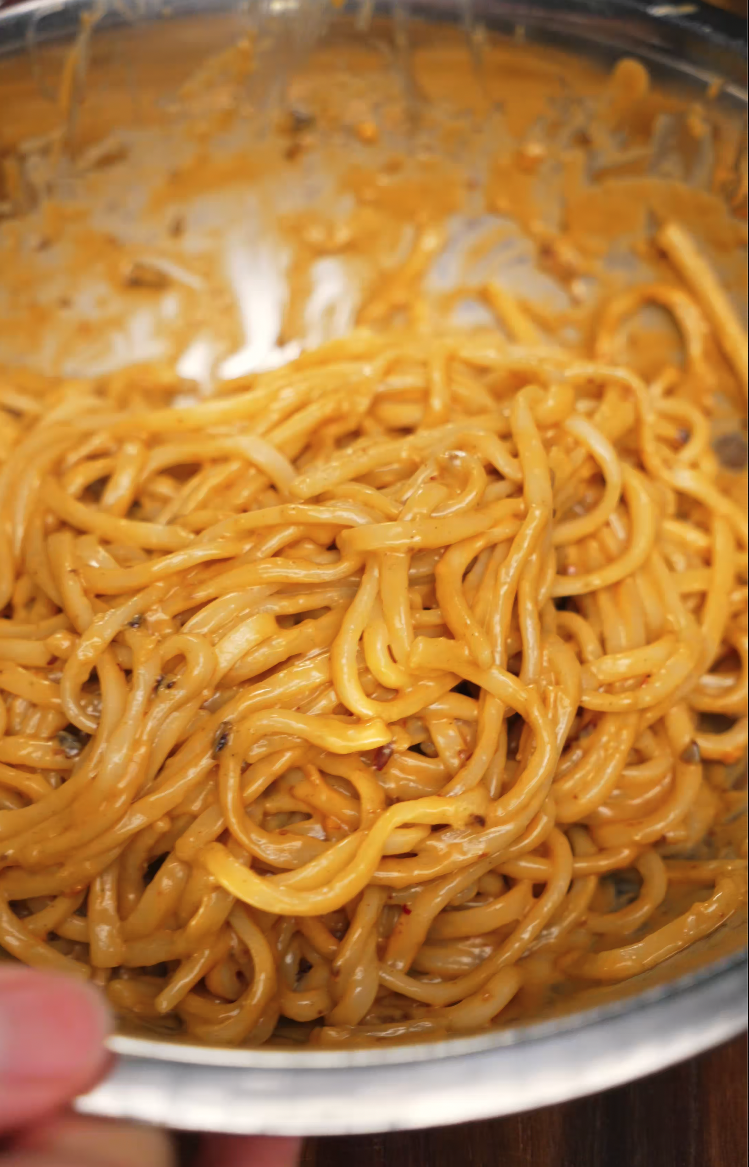
Tips and Variations
Don’t Have Chinese Black Vinegar?
You can substitute balsamic vinegar or rice vinegar if needed. It won’t have the same depth, but it will still give you that necessary tang
Peanut Allergy?
Try sunflower seed butter or tahini instead. They won’t taste the same, but they’ll keep the dish creamy and balanced

Frequently Asked Questions
How can I make this spicier?
Add more chili oil or toss in some fresh sliced chili peppers. You can also bump up the Sichuan chili powder for extra heat.
Can I use dry noodles instead of fresh?
Yes, just follow the package instructions. I recommend a thinner noodle like ramen or lo mein for the best texture.
What if my peanut butter is too thick?
Microwave it for 15–20 seconds before mixing, or just stir longer with hot noodle water until it smooths out.
Is this vegan?
Yes, as long as your noodles don’t contain egg and you use plant-based garnishes, it’s 100% vegan.
You Might Also Like
If you love spicy noodles, try my Chili Garlic Butter Noodles.
Need something bold and meaty? Go for my Sticky Crispy Beef.
Looking for a fast egg dish? My Egg Fried Rice is done in minutes.

